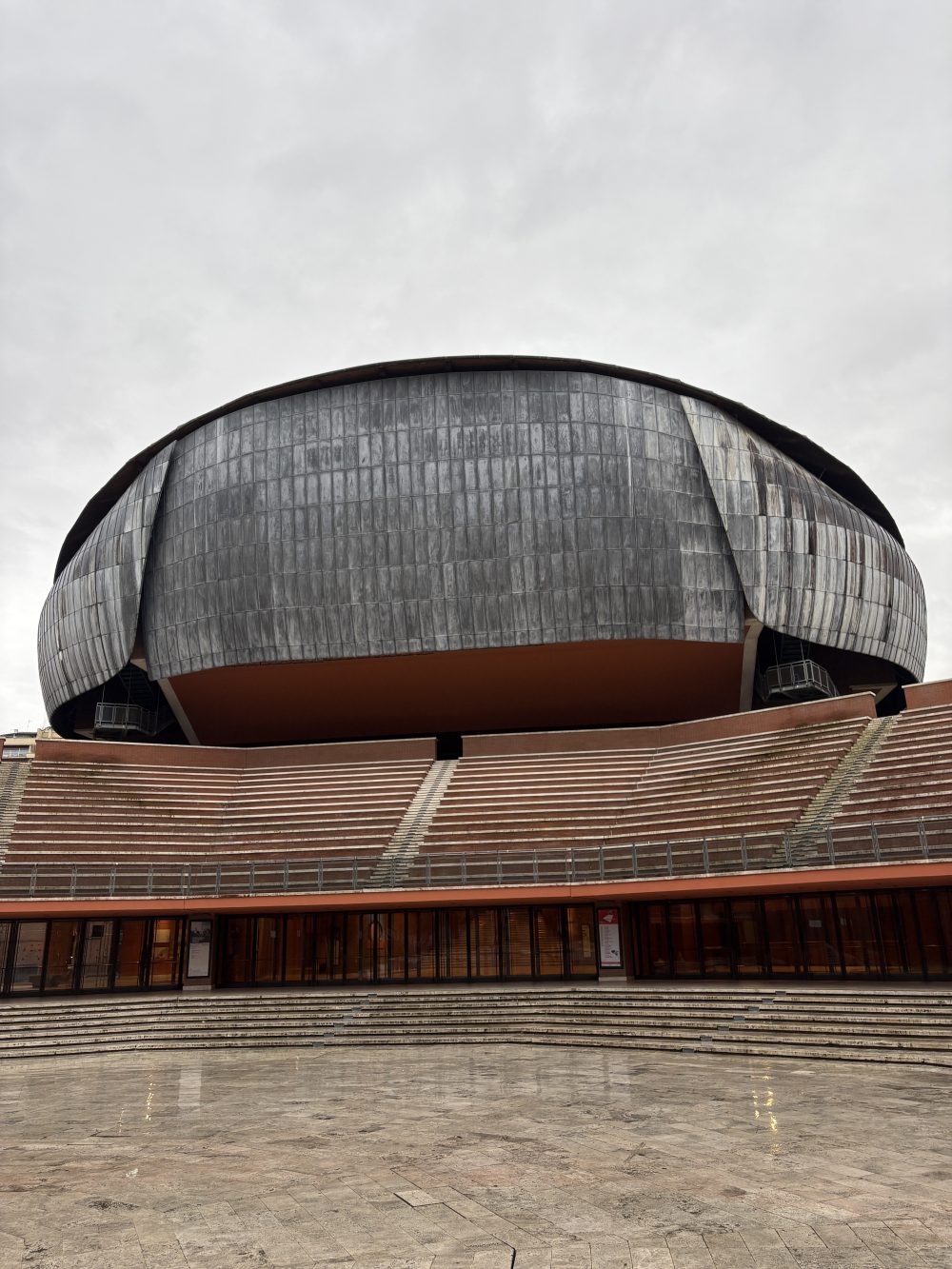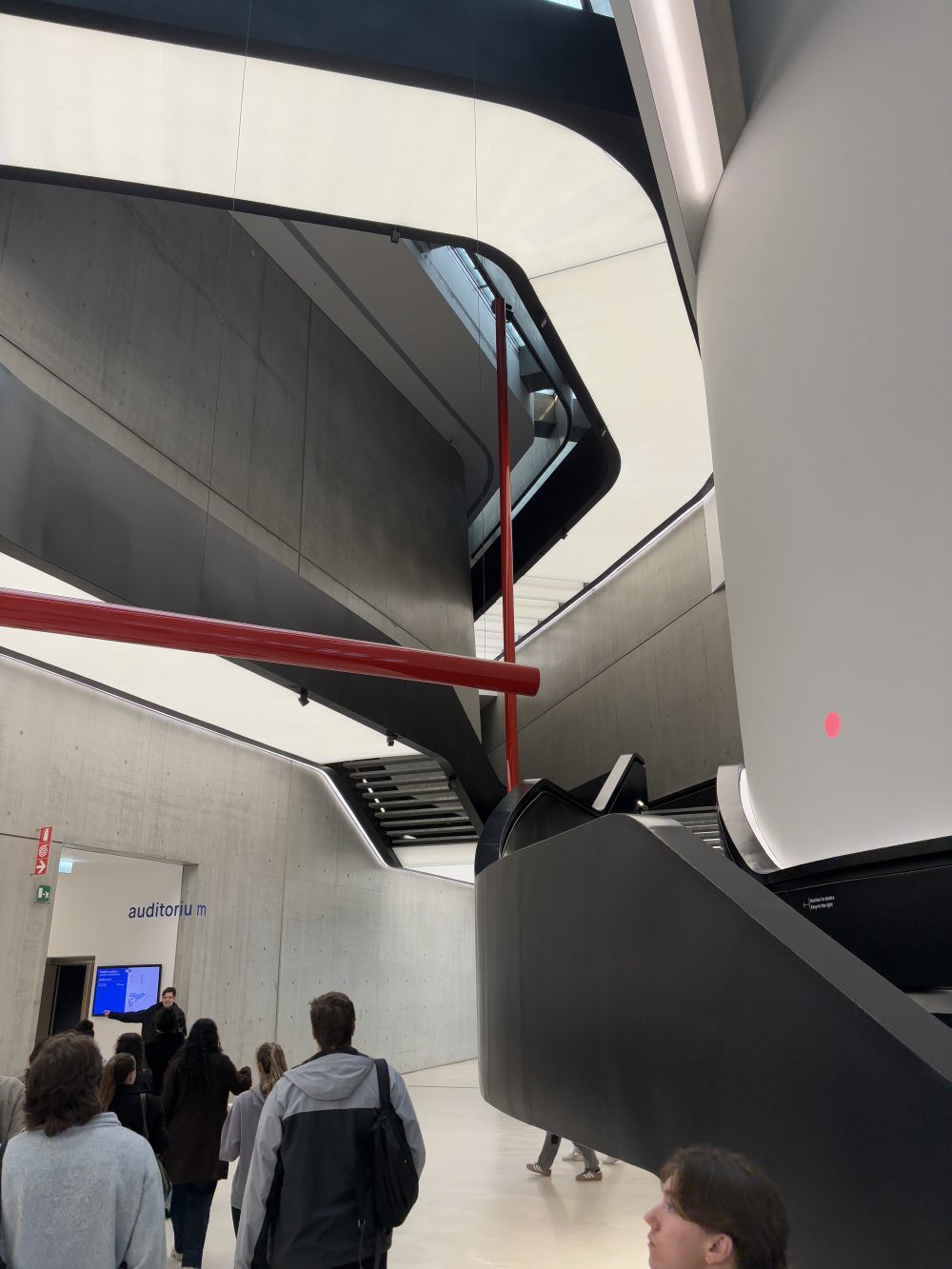Beyond the Colosseum: Discovering Modern Rome

by Franklin Bell, who studied abroad in Rome, Italy in Spring 2025.
When most people think of Rome, images of ancient ruins, cobbled streets, and Renaissance art come to mind. The Eternal City is, after all, a living museum of Western civilization, with more than two millennia of history around every corner. But what surprises many students studying abroad is that Rome isn’t just a relic of the past—it’s also a vibrant, evolving city that embraces bold modernity.
For those looking to experience the cutting edge of contemporary architecture while abroad, three buildings stand out as icons of Rome’s modern side: La Nuvola (The Cloud) by Studio Fuksas, Parco della Musica by Renzo Piano, and the MAXXI Museum by Zaha Hadid.

Designed by Renzo Piano, the Parco della Musica is Rome’s answer to the modern concert hall. It’s not just one building, but a complex of three “beetle-shaped” halls nestled among gardens and Roman ruins. That’s right—when the site was being excavated, ancient foundations were discovered and preserved as part of the final design. Piano’s approach honors Rome’s layered history while giving it a fresh cultural heartbeat. The concert halls themselves are acoustic masterpieces, and the space has become one of Europe’s busiest musical venues. Whether you’re catching a symphony or lounging at an outdoor festival, the Parco invites you to experience art in a setting where the old and new exist in harmony.

Located in the EUR district—an area originally conceived in the 1930s as a showcase of
modernist Fascist architecture—La Nuvola is a sleek, futuristic convention center that breaks from its stark surroundings with striking softness. Designed by Massimiliano and Doriana Fuksas, the building’s exterior is a rigid glass box, but inside floats “the cloud,” an amorphous, translucent structure made from steel and fiberglass.
Walking through La Nuvola feels like stepping into a science fiction novel. The contrast between the outer shell and the inner cloud is more than aesthetic—it symbolizes Rome’s dual identity: the grounded, historic city that also dares to dream.

If you’re studying design, architecture, or contemporary art, the MAXXI (Museum of 21st Century Arts) is a must-visit. Designed by the late Zaha Hadid, the museum is an architectural
marvel—a flowing, angular space that defies traditional form.
MAXXI isn’t just a building that houses art; it is art. The galleries twist and turn in unexpected ways, encouraging visitors to explore, question, and engage with the space. It’s a bold contrast to Rome’s classic museums, offering a fresh perspective on what culture looks like today.
The Modern Side of the Eternal City
Rome’s reputation as a historic city is well earned, but don’t let the ruins fool you—this city is alive, dynamic, and always changing. As a student abroad, exploring these modern spaces provides a unique lens through which to understand Rome. They remind us that history doesn’t stop; it evolves. And in Rome, the future is built right next to the past. Rome may be defined by its past, but its present is just as compelling. With architectural landmarks like La Nuvola, the Parco della Musica, and the MAXXI, students studying abroad can witness how contemporary design interacts with ancient history. These buildings prove that Rome is more than a museum—it’s a city that continues to inspire, challenge, and reinvent itself.